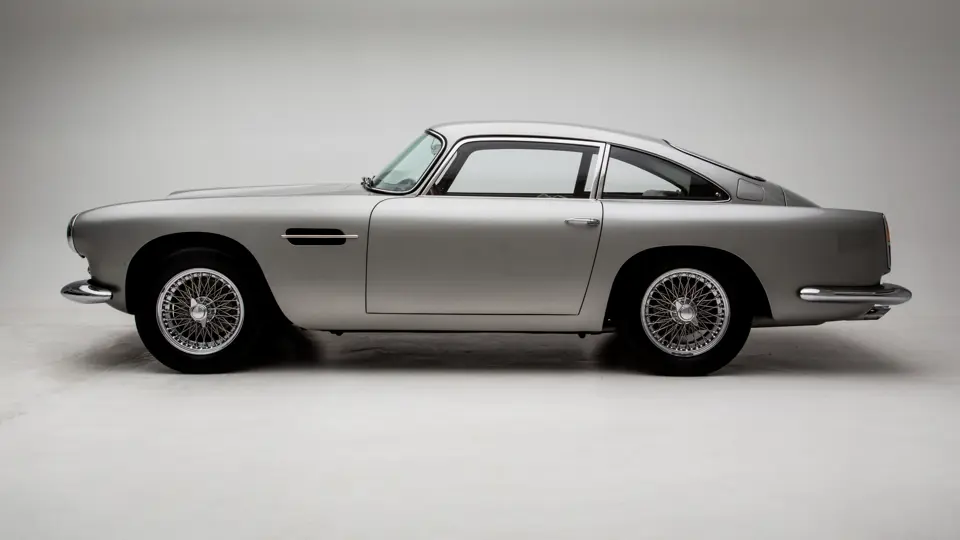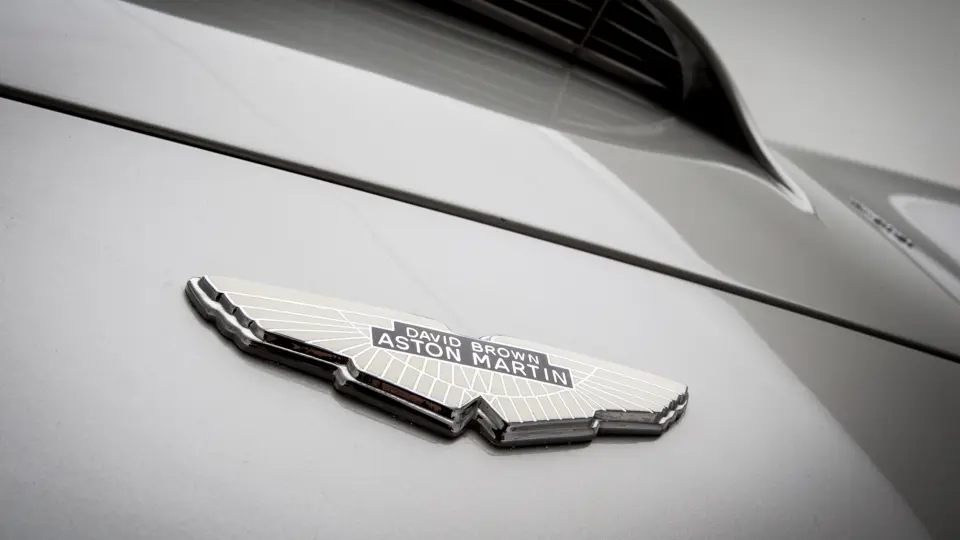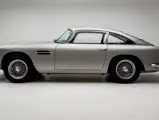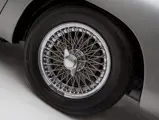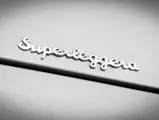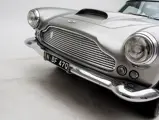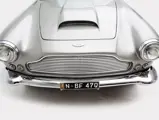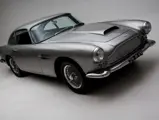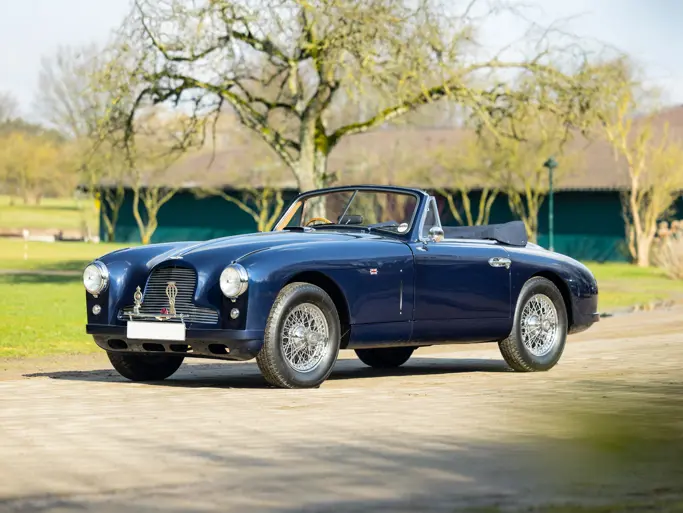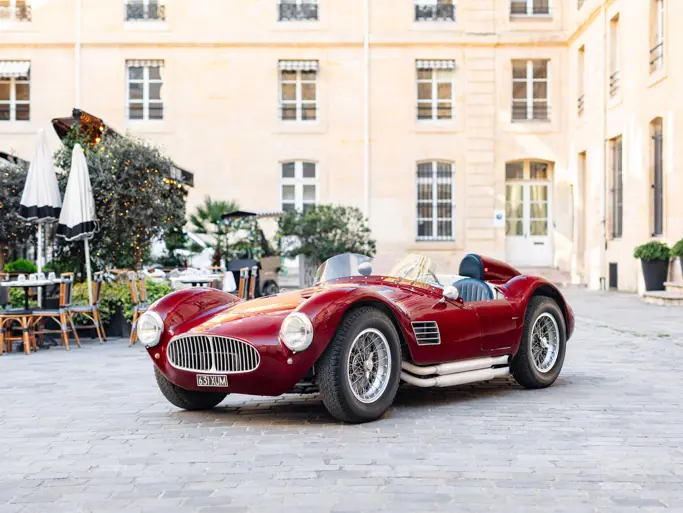240 hp, 3.7-liter dual overhead cam inline six-cylinder engine with twin SU carburetors, four-speed manual transmission, rack-and-pinion steering, independent front suspension with upper and lower control arms and coil springs, rear live axle with Watt linkage, trailing arms and coil springs, and four-wheel disc brakes. Wheelbase: 98 in.
• Desirable Series II model with a matching-numbers engine
• Sympathetically and professionally restored
• Engine rebuilt to four-liter specification
• Well maintained and fully sorted
The replacement for the DB Mark III, the DB4, was launched in 1958, and it was a very different creature indeed. Carrozzeria Touring, of Milan, Italy, had designed a clean, elegant, and understated gentleman’s GT and licensed to Aston Martin their patented superleggera tube body framing system, all covered by lightweight aluminum panels. The DB4 was the first model built at Aston’s then-new Newport Pagnell factory, and its styling influenced the company’s products for more than a decade to come. With four-wheel disc brakes, rack-and-pinion steering, and an aluminum twin-cam 240 horsepower engine capable of pushing the lithe coupe to a top speed of 140 mph, the DB4 quickly became the standard bearer for luxury high performance in the UK, and it established a brilliant reputation for the marque around the world.
With numerous running changes during its five-year model run, the AMOC Register has separated DB4s into five series, which roughly correspond to many differences in the configuration. The second series cars are today respected as the first to be modified to solve certain problems with early production, while representing the last with the attractive, one-piece “cathedral” tail lamps, the tall bonnet scoop, and the original grille design.
This DB4 Series II was initially UK-delivered in early-1960, originally finished in Peony Red. Circa 1970, this right-hand drive example had found its way to California, where it resided in the tony environs of Beverly Hills and then Palm Springs, where at some time in the mid-1980s it was repainted in a dark metallic blue. A previous owner purchased the Aston in 1985, and while retaining it for 20 years, he steadily improved the car prior to selling it in 2005.
The current owner purchased the car in Southern California in 2007 and exported it to his native Australia. While there, he enjoyed driving the car frequently, reveling in the way the DB4 ran, in his words, it was “soft, loud, and satisfying.” Seeking to bring the Aston back to its new car best while also retaining a very original feel, he commissioned a sympathetic restoration from the noted Hills & Co. shop in Taree, New South Wales from 2010–2011. During this work, the color was changed from blue to the attractive Silver Birch, which it now wears. The bare metal respray revealed only a miniscule amount of corrosion in the aluminum body, not surprising given its long period in sunny, dry California. In fact, all the inner fenders, door bottoms, sills, and chassis were reported to be completely rust-free.
The interior, which was completely removed for the fitting of modern sound and heat insulation, is today a pleasing mix of original and correctly refreshed, with beautifully patinated front seats set off nicely by new carpeting. A period Blaupunkt radio is fitted in the dash console, while a spare period Motorola radio is also included with the car.
During the work at Hills, an extensive number of mechanical modifications were made to ensure reliable running and optimal performance. The engine, which had been rebuilt to four-liter specification in the U.S. less than 20,000 miles previously, received new timing chains, a machining of the head, and overhauled carburetors and intake manifolds. The power is put down to the road through a rebuilt gearbox and an original spec DB4GT Powr-Lok limited slip differential. To ensure that the DB4 handled and halted as well as it did when new, a complete suspension rebuild was done, which included new springs, uprated modern shock absorbers, and rebuilt steering complemented by fully overhauled and renewed brakes. The electrical system has been enhanced with a negative ground conversion, a new alternator, and a starter motor, as well as a thermostatic fan. The work was completed with a cleaning and re-sealing of the fuel tank.
As presented today, this fine example of the fast, elegant, and beautiful DB4 is a testament both to the cossetted care it received during its life in California and to the careful attention to renewal and preservation given to it by its current owner. Excellent engine compression has been documented in a recent test, which confirmed that all cylinders measured between 160 and 165 pounds per square inch, which is both impressive and comforting. Finally, it has just been fitted with a new, stainless steel exhaust system.
It was a lifelong ambition of the current owner to possess a DB4 as wonderful as this, and he has found that the pleasing driving experience has nearly equaled the hours spent simply admiring its lines! A growing young family now forces the sale.
This well-sorted Aston Martin comes complete with a thick file of receipts and history, as well as the originally fitted bumper overriders; its original jack, workshop manual, and user guide; and a custom car cover by Kevin Kay. It also includes a rebuilt triple Weber carburetor set with manifolds, should the next owner desire the opportunity to trade strict authenticity with the throaty roar of the DB4GT-style Weber setup. That the DB4 is one of the most notable English cars of the 20th century is without doubt. The interest in and desirability of these iconic British sports GTs continues to grow and shows little sign of abating. This well-presented example would be an excellent choice for connoisseurs of the model.
Please note that an import duty of 2.5% of the purchase price is payable on this car if the buyer is a resident of the United States.


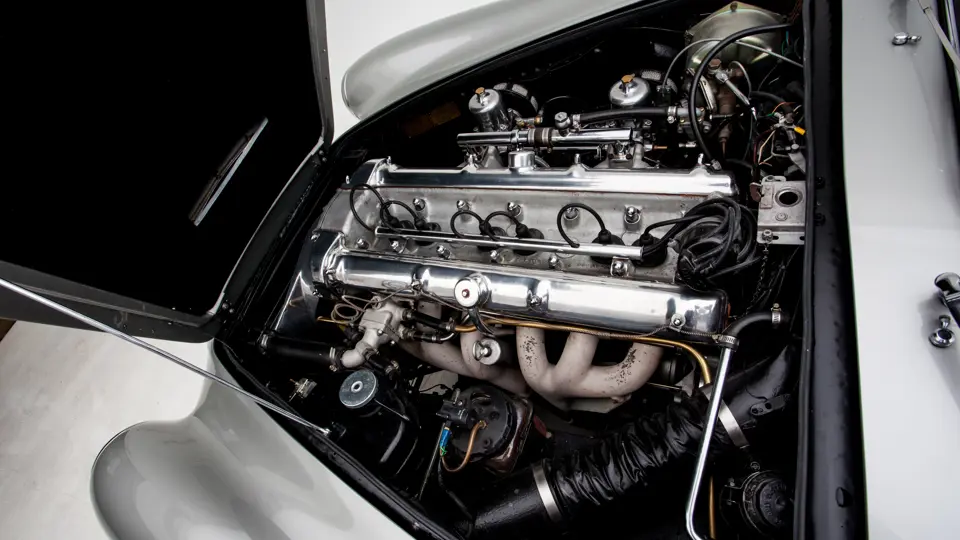

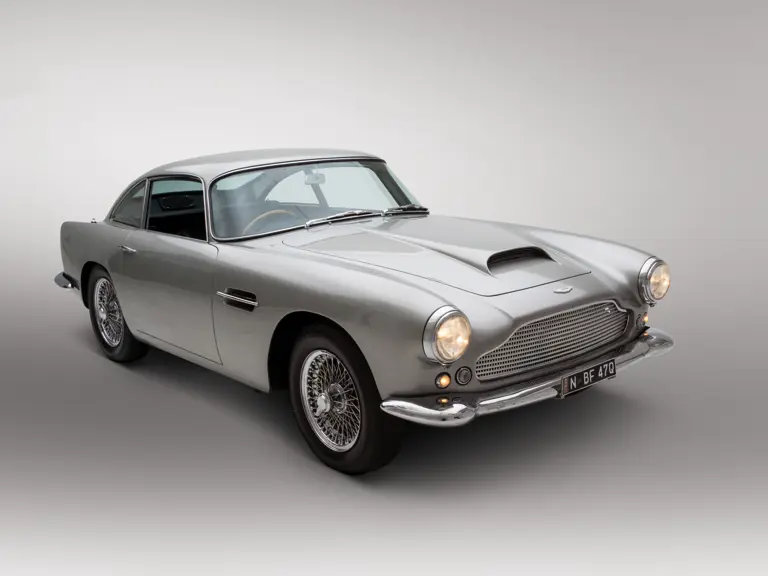
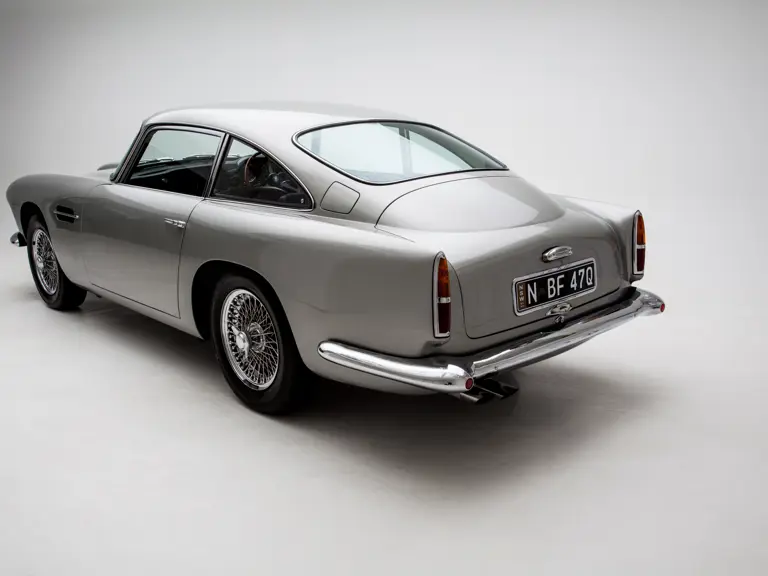
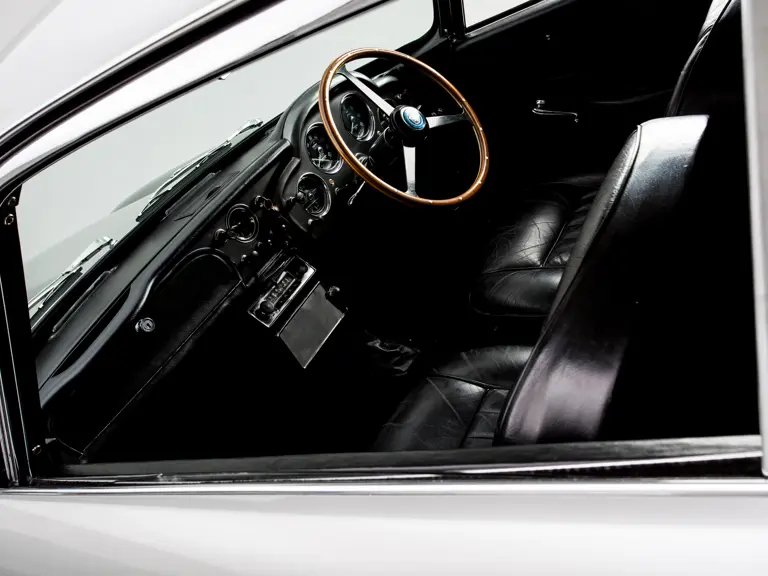
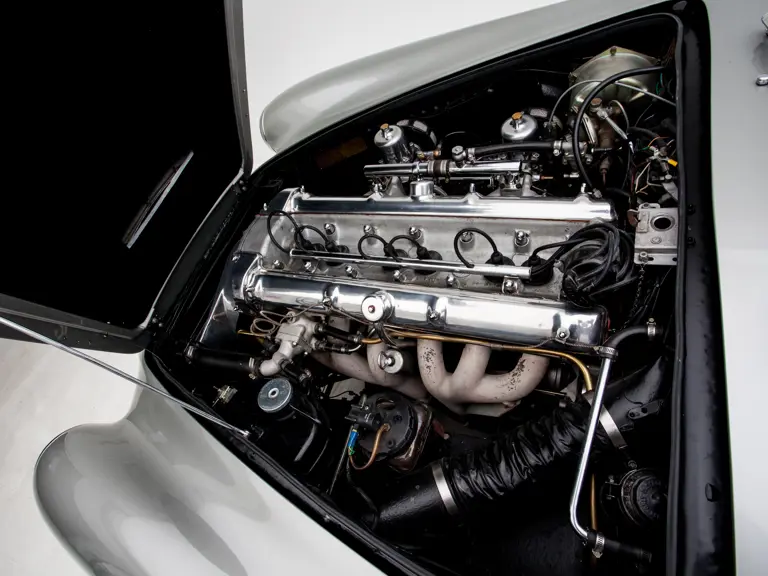
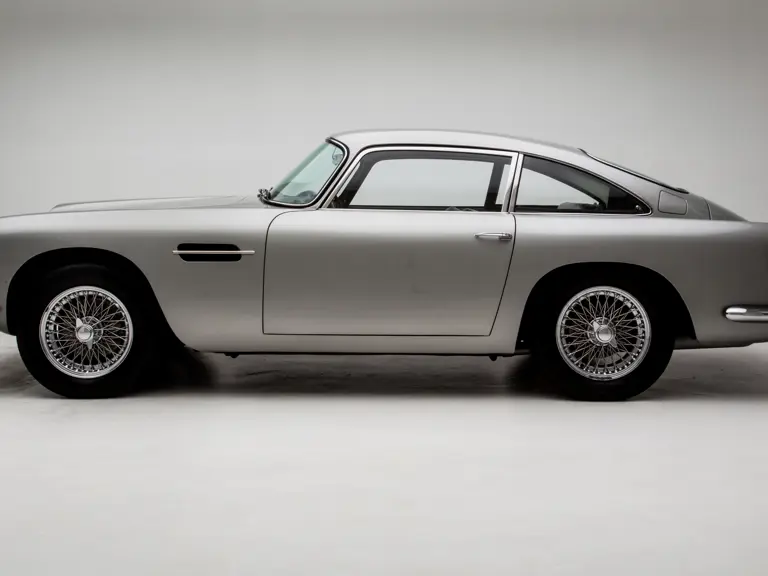
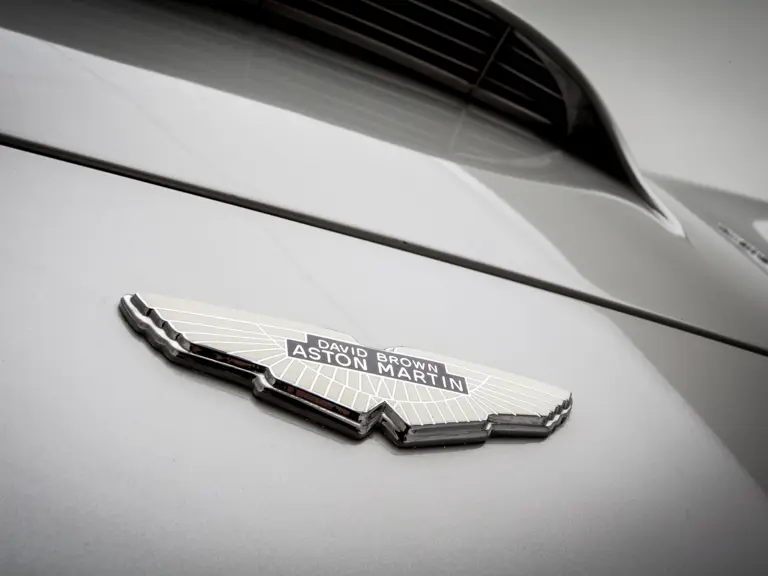
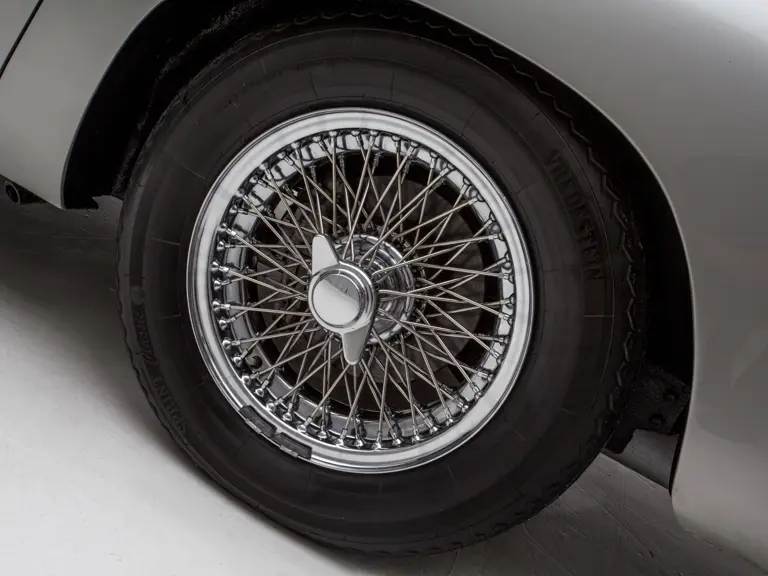
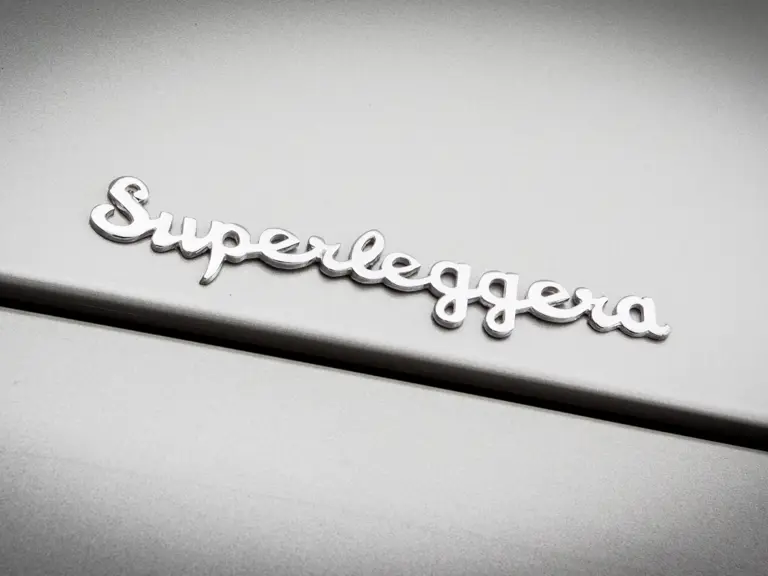
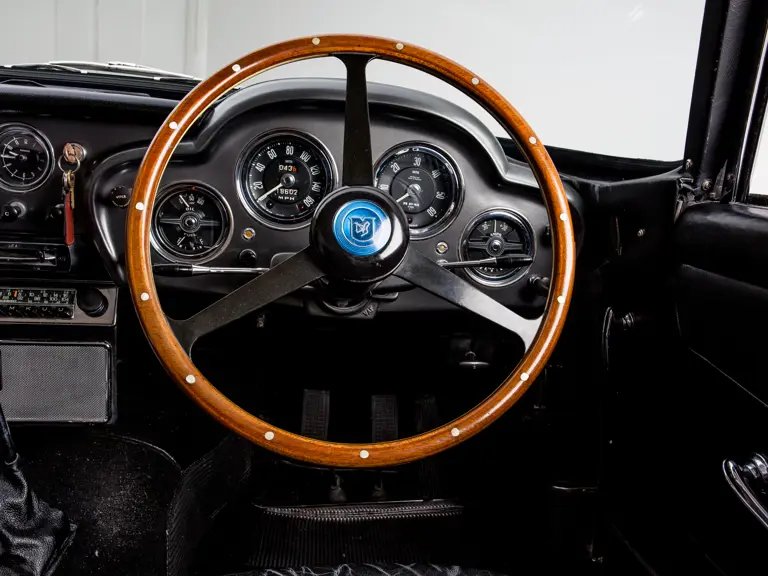
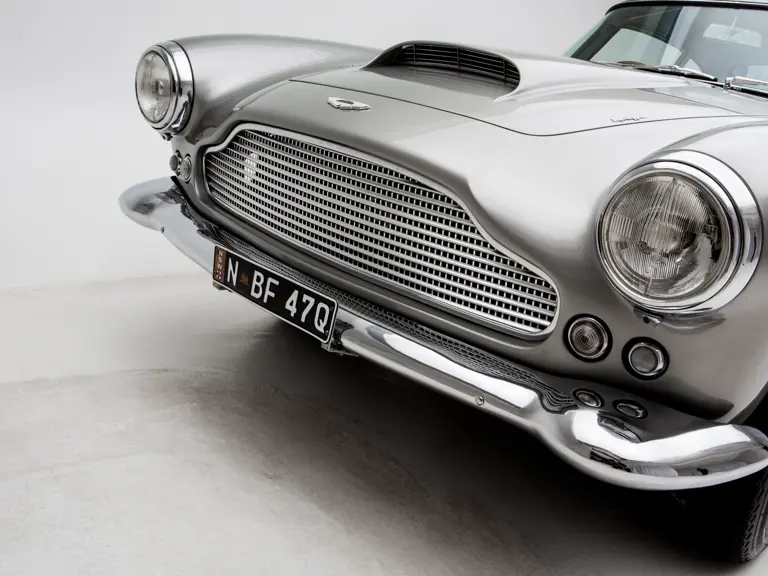
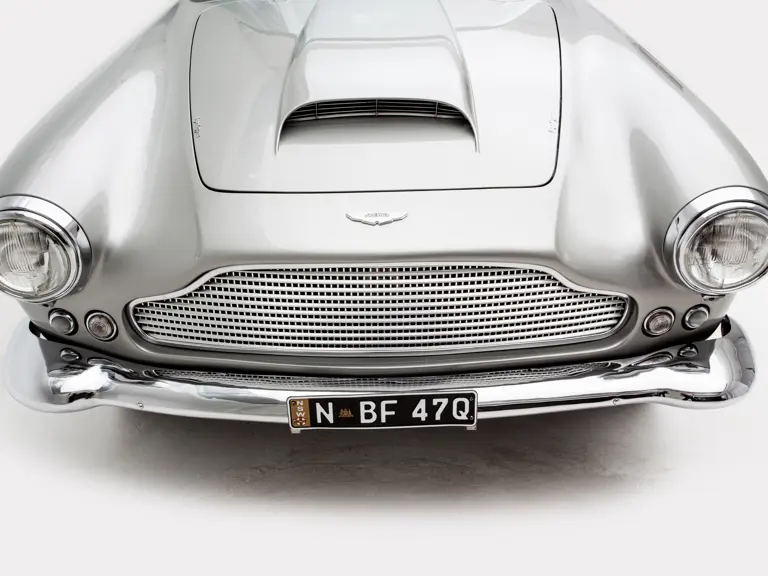
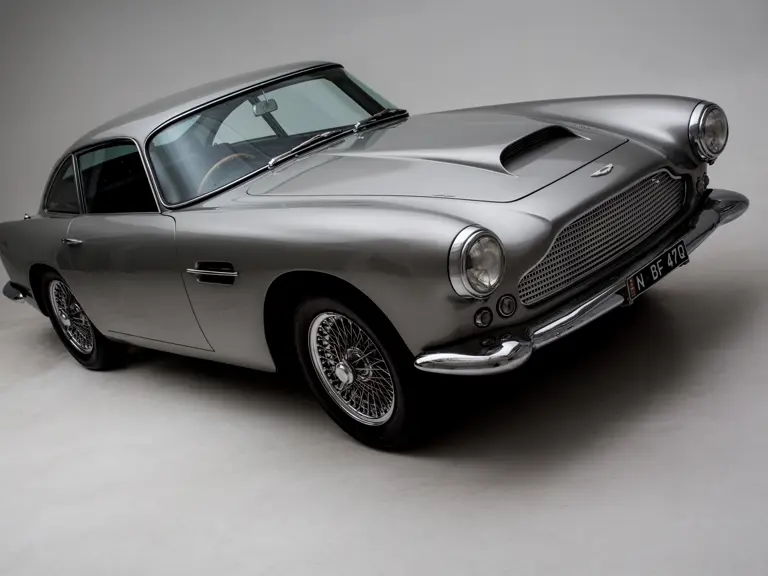

 | Phoenix, Arizona
| Phoenix, Arizona
